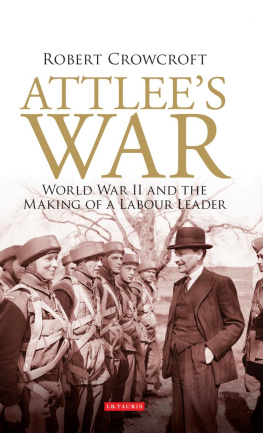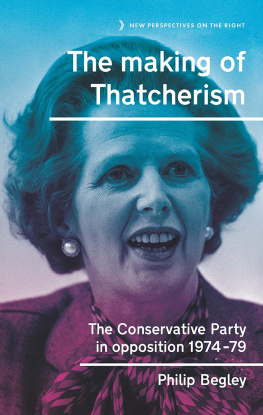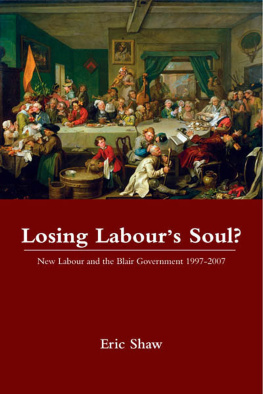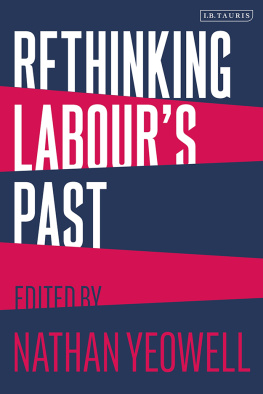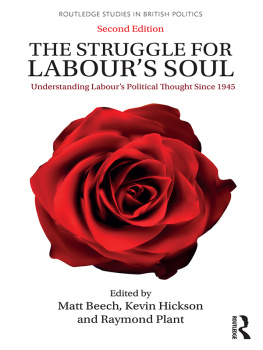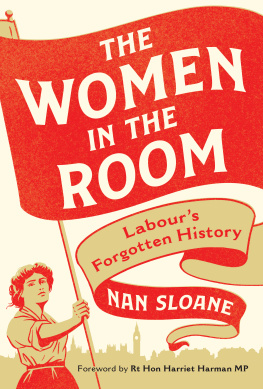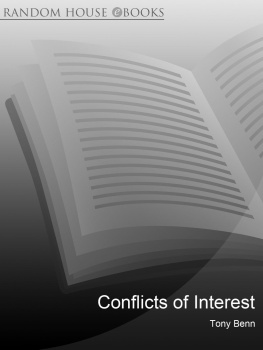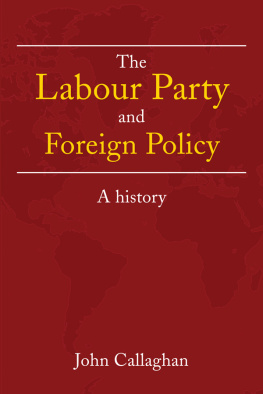The modernisation of the Labour Party, 197997
The modernisation of the Labour Party, 197997
Christopher Massey
Manchester University Press
Copyright Christopher Massey 2020
The right of Christopher Massey to be identified as the author of this work has been asserted by him in accordance with the Copyright, Designs and Patents Act 1988.
Published by Manchester University Press
Altrincham Street, Manchester M1 7JA
www.manchesteruniversitypress.co.uk
British Library Cataloguing-in-Publication Data
A catalogue record for this book is available from the British Library
ISBN 978 1 5261 4442 3 hardback
First published 2020
The publisher has no responsibility for the persistence or accuracy of URLs for any external or third-party internet websites referred to in this book, and does not guarantee that any content on such websites is, or will remain, accurate or appropriate.
Cover image: Lord Tom Sawyer
Typeset by Servis Filmsetting Ltd, Stockport, Cheshire
To Kelly for her unconditional love.
To my Dad for everything.
To my Mam, Aunts and Grandparents for their eternal support.
Contents
This book had its origins in 2015 when I was appointed as a post-doctoral researcher at Teesside University to study the life and times of Lord Tom Sawyer, the universitys chancellor. Arising from this project, a further three-year post on the modernisation of the Labour Party was funded by the Vice Chancellor and Chief Executive of Teesside University, Professor Paul Croney, to whom I am incredibly grateful.
This book draws on extensive archival research alongside the private papers and Journal of Lord Tom Sawyer. My thanks go to the archive staff at the five major archives I have visited: the Bishopsgate Institute; Churchill College; the Modern Record Centre; Hull History Centre; and the Labour History Archive and Study Centre. Particular thanks go to Darren Treadwell at the Labour History Archive for his help and assistance over the years. I also thank Lord Prescott for granting permission to access his archive held in Hull.
The research also owes a tremendous debt to the twenty-four interviewees who participated in the project, including, but not limited to, two former Labour leaders (Tony Blair and Neil Kinnock), three former party General Secretaries (Larry Whitty, Tom Sawyer and Margaret McDonagh), and numerous former MPs and members of party staff.
My eternal thanks go to Tom Sawyer. Without his help and support this work would not have been possible. The kind donation of the Sawyer Archive to Teesside University has been of incredible assistance. Additionally, I am incredibly grateful for the unfettered access I have received to Toms private papers and journal. These resources have provided a unique and entirely untapped insight into the modernisation of the Labour Party and trade union movement between 1983 and 1998. Finally, Toms assistance in securing interviews for myself with the key actors in Labours modernisation during this project has opened doors closed to most researchers. However, none of the individuals interviewed or mentioned in this work have steered any of the independent judgements or arguments made within this academic study and none of these men and women knew what conclusions would be reached in this monograph when they took part in the project.
I extend my thanks to the staff at Manchester University Press and the anonymous reviewers of the monograph for their support throughout the construction of this work. I would also like to thank my entire family for their love and support on my journey but particularly my aunt, Kathleen Massey, and my fiance, Kelly Butcher for their tireless assistance in proof-reading this work. Finally, I extend my deepest gratitude to Kelly who encouraged me to return to academia in 2015. To her, my greatest debt is owed.
Christopher Massey,
Teesside University,
September 2019.
| AEU | Amalgamated Engineering Union |
| AEEU | Amalgamated Engineering and Electrical Union |
| ASTMS | Association of Scientific, Technical and Managerial Staffs |
| BLP | Branch Labour Party |
| CLP | Constituency Labour Party |
| CLPD | Campaign for Labour Party Democracy |
| CLV | Campaign for Labour Victory |
| COHSE | Confederation of Health Service Employees |
| DLP | District Labour Party |
| EPLP | European Parliamentary Labour Party |
| ERM | European Exchange Rate Mechanism |
| GMPU | Graphical, Paper and Media Union |
| JPC | Joint Policy Committee |
| LCC | Labour Co-ordinating Committee |
| LHASC | Labour History Archive and Study Centre, Peoples History Museum Manchester |
| LPYS | Labour Party Young Socialists |
| MSF | Manufacturing, Science and Finance Union |
| NALGO | National and Local Government Officers Association |
| NEC | National Executive Committee (Labour Party) |
| NOLS | National Organisation of Labour Students |
| NUM | National Union of Mineworkers |
| NUPE | National Union of Public Employees |
| OMOV | One Member, One Vote |
| PLP | Parliamentary Labour Party |
| RMFC | Rank and File Mobilising Committee |
| RMT | National Union of Rail, Maritime and Transport Workers |
| TGWU | Transport and General Workers Union |
| TSSA | Transport Salaried Staffs Association |
| TUC | Trades Union Congress |
| TULV | Trade Unions for a Labour Victory |
| UCW | Union of Communication Workers |
| USDAW | Union of Shop, Distributive and Allied Workers |
The period between 1979 and 1997 saw fundamental changes in the structure, ideology and electoral appeal of the Labour Party. This process, the modernisation of the party, led to the formation of New Labour, a movement in sharp contrast with the partys left-wing position of the early 1980s. This modernisation altered Labours policies, internal structures and constitution. Across these years, the party moved away from calls for widespread nationalisation, unilateralism and European withdrawal, towards an embrace of supply-side economics and a closer relationship with the market. Through organisational reform, Labours structures were also modernised. At the beginning of this period, Labour gave a 90 per cent share of its conference vote to the trade union movement, granted constituency and conference votes to delegates only, allowed MPs alone a vote in leadership elections, and had a left-leaning manifesto that was out of touch with the median voter. By the 1997 general election, Labour had a 50/50 split between unions and constituencies at conference, One Member, One Vote (OMOV) within conference, candidate selection and leadership ballots, and a manifesto far more in tune with the views of the British public. These changes, alongside the reformulation of Labours policy-making avenues (and redirection of policy outputs), through the Policy Review and the creation of the National Policy Forum (NPF), substantially changed the constitution, organisation, and electoral fortunes of the Labour Party.


